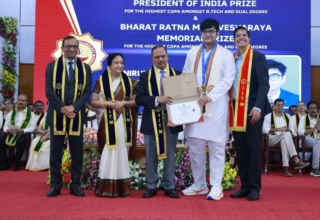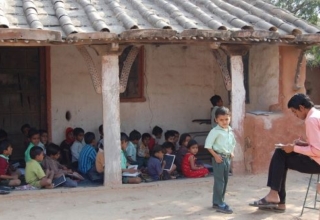
About half of students not engaged in learning in classrooms, need for a framework for technology integration into traditional ways of teaching/learning
 The fourth annual edition of Voice of Teachers Survey by the Indian subsidiary of textbook/digital publisher & education solution provider, Pearson, springs no surprises. Indicating similarity with a global trend, the survey based on teacher opinions reveals teachers feel that only 55% of the students are actively engaged in learning.
The fourth annual edition of Voice of Teachers Survey by the Indian subsidiary of textbook/digital publisher & education solution provider, Pearson, springs no surprises. Indicating similarity with a global trend, the survey based on teacher opinions reveals teachers feel that only 55% of the students are actively engaged in learning.
This year, the survey chose to find out engagement level of Indian students and also identify the critical enablers to enhance student engagement. A total of 6,494 teachers from 546 locations across India were interviewed on a prepared questionnaire by Spire Research & Consulting firm engaged by Pearson India. Of these respondents, 3,077 were school teachers and 3,417 were teachers of higher education. The share of government intuitions was 34% where as the ramining 56% were from private sector.
The survey released on September 2 highlights the significant variation in student engagement – by institution, level and states. Teachers opine that students from government schools are far less engaged (51%) than those in private schools (67%). Further, student engagement is perceived to drop from the school level (61%) to higher education level (50%). Commenting on the findings of the survey experts gave mixed reactions. Whereas Dr Pankaj Gupta, vice dean at the Jindal Global Buisness School said 50% is a huge loss and we need innovative ways to engage learners, Prof Rupamanjari Ghosh, VC of Shiv Nadar Univesity, Noida saw it part of a global trend and reality of education system worldwide.
The teachers (29%) feel that excessive use of personal gadgets by students and lack of parental support (12%) are the key deterrents to student engagement. The survey included 12 key inhibitors to engagement. Particularly, in private schools across India, excessive use of personal gadgets by students (27%), lack of parental support (24%) and too much pressure to perform (15%) are identified as top factors for low student engagement. “At Salwan, we have tried to engage students in technology in more innovative way by making them co-creators in technology-enabled lessons. They make modules with teachers. That way it channelizes their appetite of gadget use,” says Indu Khetrapal, director of Salwan Public School, Delhi. Students themselves love technology and gadgets, though over 90% of the use is for entertainment. The key is to involve them. If technology is integrated into CCE, it works wonders. “I used to hate literature. But when we began to enact Hindi textbook stories, hold workshops and discussion, I fell in love with subject and now I am going to be a literature students,” says Saumya Joshi, a class XI student.
According to Deepak Mehrotra, Managing Director, Pearson India “While the teachers feel that excessive use of personal gadgets is an inhibitor to student engagement, interestingly, they have also shown widespread acceptance for technology aid in the learning process. This clearly calls for building a framework to effectively integrate the technology platform into traditional learning to achieve desired student engagement levels and learning outcomes.”
Lack of parental support (43%) is a much bigger barrier to student engagement in government schools, followed by challenges faced by students outside of school/ college (13%) and their past performance (11%). According to Raheshwari Kapri, a government school principal from Delhi, we need to work harder to engage students, may be some role models to motivate them. “We’re dealing with first generation learners’ in government schools and that plays a role,” she adds.
In the findings, while the teachers (73%) feel that participation in extra-curricular activities has improved in the past five years, they perceive a noticeable decline in students’ values and ethics (42%) and discipline (38%). “Actually lot of learners are more engaged outside classrooms. Schools need have to spaces and platforms where children can engage. For this life skill education is important. Schools have evolved, the focus is not confined to academics only so, the definition of engagement should also be seen in that perspective,” adds L M Sehgal, Principal of Bal Bharati Public School, Delhi.
Only 49% of respondents feel that they receive adequate training to enhance learner engagement levels and inquisitiveness. Adequacy of teacher training is perceived to be much higher among school teachers (70%) than higher education teachers (30%).
To further improve student engagement, teachers have identified the use of real-life examples & stories (86%), group discussions/activities (83%) and use of technology platforms (81%) as the most useful tools and techniques. The teachers chose these factors from among 14 enablers of student engagement. “Pearson is committed to working with the education system globally to bring focus to it. The Pearson Voice of Teacher survey is a firm step in that direction, through which we engage with teachers every year to identify topical issues and suggest measures to bring effectiveness in the Indian education system. We are overwhelmed with growing relevance of this opinion platform and will continue to build it further in an effort to transform the education landscape in India,”adds Mehrotra, of Pearson.









